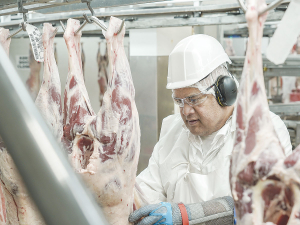Rabobank 2026 Outlook: Geopolitics shapes global agriculture
The global agricultural landscape has entered a new phase where geopolitics – not only traditional market forces – will dictate agricultural trade flows, prices, and production decisions.
 China remains our top market with 50% of total lamb exports, but the value of shipments has plunged 25% year-on-year.
China remains our top market with 50% of total lamb exports, but the value of shipments has plunged 25% year-on-year.
'El Nino has officially arrived.’
That’s how Rabobank’s October agribusiness report begins, on the back of NIWA’s weather reports for September.
This has seen RaboResearch lower its milk production forecast from the big seven milk export regions to a mere 0.4% growth in output. However, it also sees a possible whiplash in milk prices growing as demand resurgence potentially outstrips milk output, leading to a shortage of milk and providing a bullish run into 2024.
Following beef prices tracking upwards in August after slipping in July, the banks says the North Island bull price is tracking for a slight lift above the five year average by the end of the month. In the US, higher domestic lean beef pricings as well as lower inventory are anticipated to provide positive support for imported NZ product over the coming weeks. While YOY shipments to China fell by 40%, this is mostly offset by much higher export volumes (+118%) and values (+80%) to the US.
Lamb prices generally follow on from August; that is to say, historically low but stable. While China remains our top market with 50% of total lamb exports, the value of shipments has plunged 25% year-on-year. However, demand from other markets is stronger than this point last year, with exports to the UK and US higher yearon- year for volume and value. On the other hand, Rabobank sees some indications showing that volumes may be starting to move again in the Chinese market.
The report says the bank’s prediction that August’s surge in fertiliser prices was only a temporary price correction has been borne out by the drop in Middle East reference for urea dropping 2.5% and Canadian potash steadying. Meanwhile, it says Chinese price of herbicides, fungicides and insecticides have dropped 30% YOY, and next season is likely to have a better cost structure for agrichemicals and fertilisers.
Rabobank says with Q2 growth exceeding expectations and a revised result for Q1 bringing it out of the negative, combined with a weak currency and rising global energy prices, make a much greater likelihood of a rise in the official cash rate in the near future.
Fonterra Edendale has been recognised with the Mars Dairy Supplier Quality Award for the top performing supplier sites in the global food company's dairy supply chain.
Sheep milk processor Maui Milk has achieved grass-fed certification of milk supply against the AsureQuality Grass-Fed Scheme.
OPINION: What goes up must come down. So, global dairy prices retreating from lofty heights in recent months wouldn’t come as a surprise to many farmers.
Fonterra directors and councillors are in for a pay rise next month.
Federated Farmers says it is cautiously welcoming signals from the Government that a major shake-up of local government is on its way.
Ashburton cropping and dairy farmer Matthew Paton has been elected to the board of rural services company, Ruralco.

OPINION: Winston Peters has described the decision to sell its brand to Lactalis and disperse the profit to its farmer…
OPINION: The Hound reckons a big problem with focusing too much on the wrong goal - reducing livestock emissions at…